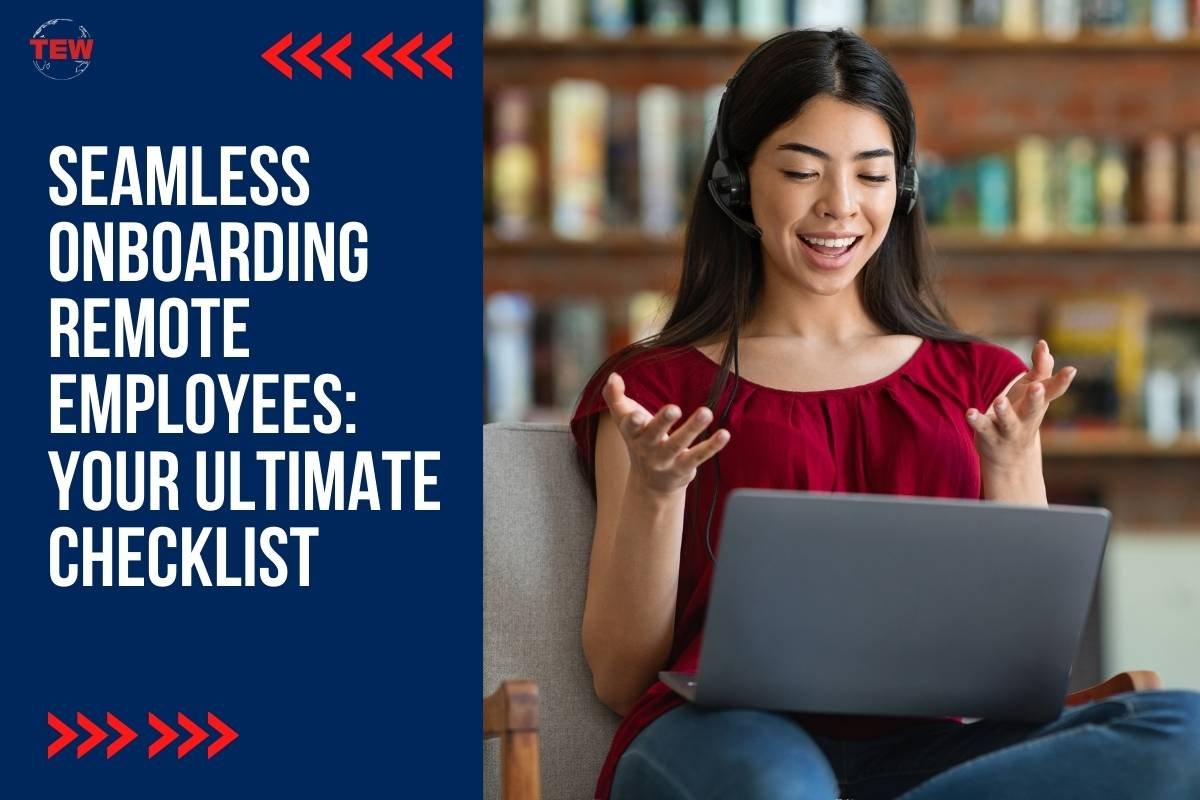Just like the first day of school – it’s normal for new hires to feel like they’re stressed, out of their element, and eagerly desperate to please. Stepping into the virtual office, they enter a world of unknowns, where distant faces on screens replace the familiar classroom. As an employer, the responsibility lies with you to ensure their onboarding experience is anything but daunting. The key lies in unlocking the power of a well-crafted HR checklist that effortlessly transforms your onboarding remote employees process into an exceptional journey of integration and success.
In this rapidly changing work environment, hiring remote employees has become more common than ever. It offers exciting prospects for your company’s growth, but it also poses unique challenges when it comes to seamlessly onboarding remote employees into your team. How do you bridge the gap of distance and create a sense of belonging and camaraderie? How can you ensure your new hires are up to speed with their responsibilities while also aligning with your company’s culture, values, and practices?
Take a deep breath because we’re here to guide you through the art of seamless onboarding of remote employees.
How to onboard remote employees?

Onboarding remote employees in today’s digital work environment is key for organizational success. This process goes beyond task orientation to include fostering a connection with company culture remotely. Effective onboarding requires clear planning, strong communication, and leveraging technology to ensure a seamless start.
Activities like virtual introductions, access to digital training resources, and ensuring new hires have the necessary tools are integral. Regular check-ins help adjust the onboarding process, making remote employees feel supported and valued, and setting the stage for a productive workforce.
Let’s discover expert tips for onboarding remote employees and keep the experience as productive as possible.
Equipping new hires with essential tools and guides
To set up new remote hires for success, ensure they have the necessary technology like a good laptop and reliable internet connection. Proactively ask new hires if they need any equipment to work from home and provide it before their start date. Confirm they’ve received essential equipment and offer IT support for setup if needed. Equipping employees with the right tools from the outset fosters productivity and a supportive remote work environment.
Embrace paperless efficiency with digital documentation

Digitizing the onboarding paperwork streamlines the process, enhancing efficiency and professionalism. Traditional methods of handling documents are not only time-consuming but also prone to errors and losses, potentially harming the onboarding experience.
Onboarding software automates these tasks, allowing for the digital sending, signing, and filing of necessary documents through integrations with platforms like DocuSign. This shift to digital solutions simplifies the process, ensuring a smooth start for new hires.
Unveiling company culture through engaging videos
Remote employees significantly contribute to and are influenced by your company’s culture. Onboarding software is crucial for effectively conveying this culture through engaging videos and digital resources. It ensures timely access to important materials such as the employee handbook, company values, and mission statements.
Additionally, it allows for the sharing of company events and team-building activities through photos and videos, helping remote employees feel connected despite the distance. This approach not only introduces new hires to the company culture efficiently but also creates a more engaging and inclusive onboarding experience.
Ensuring familiarity with essential apps and tools
When new hires join a new job, it’s common for them to encounter unfamiliar tools or applications. To ensure smooth communication and collaboration within the team, here are the best methods for contacting team members in case of inquiries or troubleshooting issues. Additionally, setup instructions for the following tools are provided:
1. Business Email:
- Set up your business email account by following the instructions provided by the IT department or HR.
- Familiarize yourself with the email interface, including composing, replying, forwarding, and organizing emails into folders.
- Ensure you understand the company’s email etiquette and policies for confidentiality and data security.
2. Group Messaging Tool:
- If your company uses tools like Slack, Microsoft Teams, or other group messaging platforms, make sure you have access to the appropriate channels.
- Install the messaging app on your computer and mobile device for easy accessibility.
- Learn how to send direct messages to team members, join channels, and use emojis or reactions to express yourself.
- Familiarize yourself with any specific channels related to your team or projects.
3. Software for Video Conferences:
- Install the video conferencing software, such as Zoom or Microsoft Teams, on your computer and test the audio and video settings.
- Familiarize yourself with scheduling and joining meetings, sharing screens, and muting/unmuting during conferences.
- Check the guidelines for virtual meeting etiquette, like being on time and minimizing background noise.
4. How-To Guide for Additional Tools (e.g., Slack, Trello, Asana, etc.):
- Tools like Slack explain how to create channels, mention team members, share files, and integrate other apps.
- If using Trello or Asana, provide step-by-step instructions on creating boards or projects, adding tasks, assigning team members, and updating task status.
- Include information on any other collaboration tools, workflows, or software commonly used in the company.
Once new employees become acquainted with these apps and tools, they will feel more at ease to dive into their tasks and collaborate effectively with the team. To ease the onboarding remote employees process, the company may also have specific onboarding software to assist in learning and adapting to the new work environment. The combination of clear instructions and user-friendly onboarding software will empower new hires to hit the ground running and contribute to the team’s success.
Establishing clear goals and expectations
A smooth onboarding process is crucial for integrating new employees into your company’s culture and workflow, especially for remote workers who might feel disconnected. Here’s a brief on streamlining their path to success:
- Task Calendar: Implement a task calendar post-training to guide new employees through their responsibilities, enabling them to independently manage their duties.
- Define Goals: Work with new hires to set immediate and future objectives, clarifying what’s expected and keeping them on target. Regular check-ins to discuss progress and provide feedback are vital for maintaining motivation.
- Weekly Check-ins: Establish weekly one-on-one meetings to review upcoming tasks, monitor achievements, and address any questions, enhancing their onboarding experience with your support.
- 30-60-90-Day Plan: Provide a detailed plan for the first three months to eliminate uncertainty, outlining expectations at each stage to boost their confidence and integration.
By taking a proactive approach to onboarding, you can ensure that new onboarding remote employees feel supported, engaged, and motivated right from the start. Moreover, onboarding software you in providing a seamless experience, allowing you to focus on building a strong and productive team.
Facilitating Meetings with Team Members and Key Players

Ensure remote employees’ successful integration by scheduling important meetings with teammates, managers, and collaborators from different departments. These can be one-on-one or group interactions, crucial for establishing connections early on.
Use recruiting solutions to send a welcome email introducing new hires to the team. Consistent team meetings reinforce relationships, promote a collaborative culture, and help remote employees feel part of the community, enabling them to excel in their roles.
Arranging Essential Training for Seamless Onboarding Remote Employees
When it comes to onboarding, training is the secret to success! Providing new hires with comprehensive training and guidance sets them up for greatness from day one. It’s not just about equipping them with the skills to tackle tasks efficiently but also ensuring they quickly become familiar with workflows.
But wait, there’s more! Cutting-edge onboarding software can make training and onboarding new employees remotely a breeze. Engaging and interactive sessions keep remote employees hooked, with access to a treasure trove of training materials, videos, and resources at their fingertips.
Bottom Line
Navigating the process of onboarding remote employees is essential in today’s dynamic work landscape. The integration of advanced onboarding software streamlines this crucial phase, automating tasks like document sharing and e-signatures, and setting a clear onboarding pathway.
Embracing such technology enhances the onboarding experience, ensuring a smooth and welcoming start for remote team members. Discover how modern onboarding tools can simplify and enrich your remote onboarding efforts.




